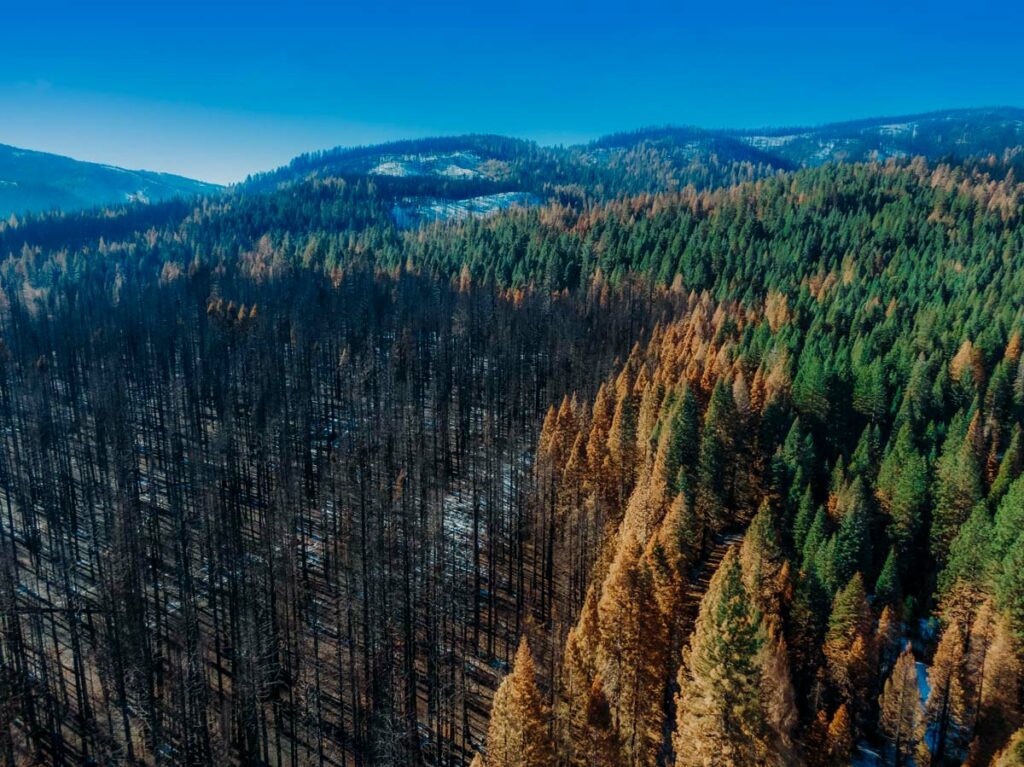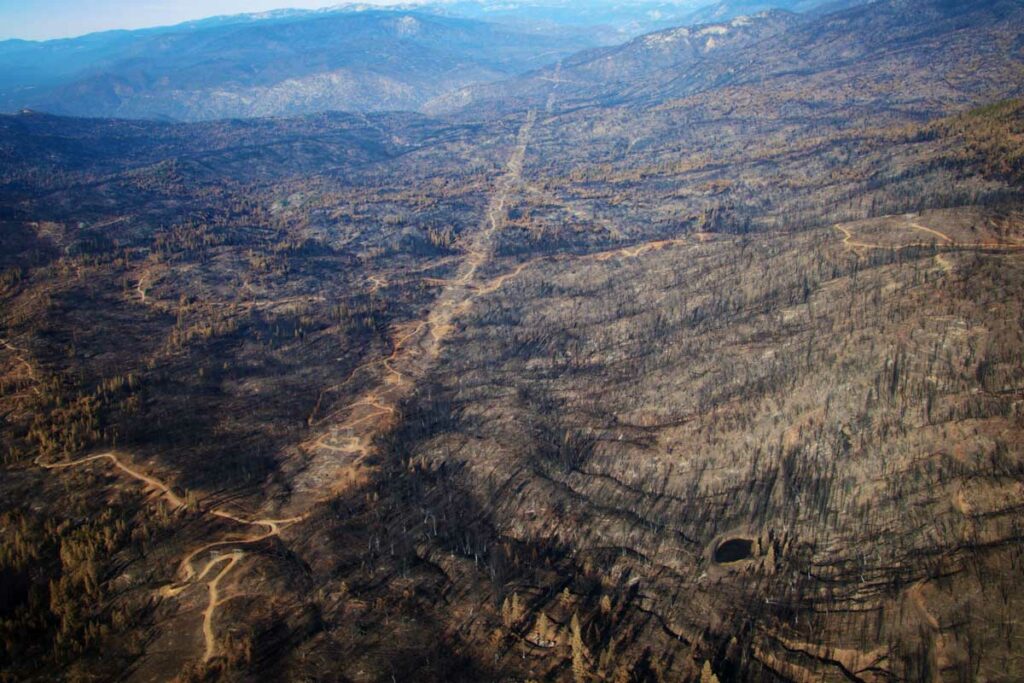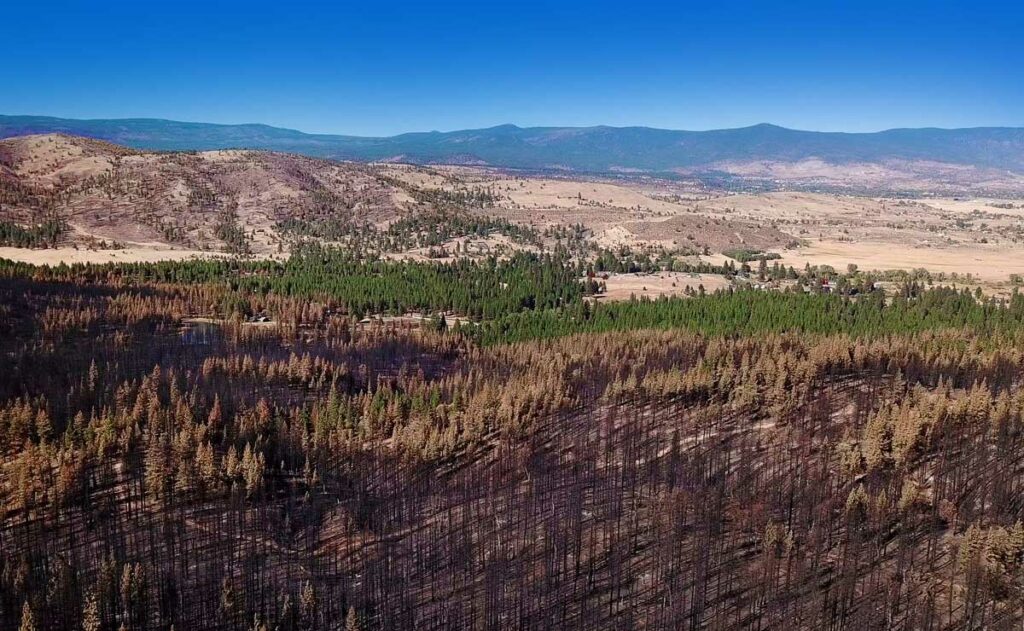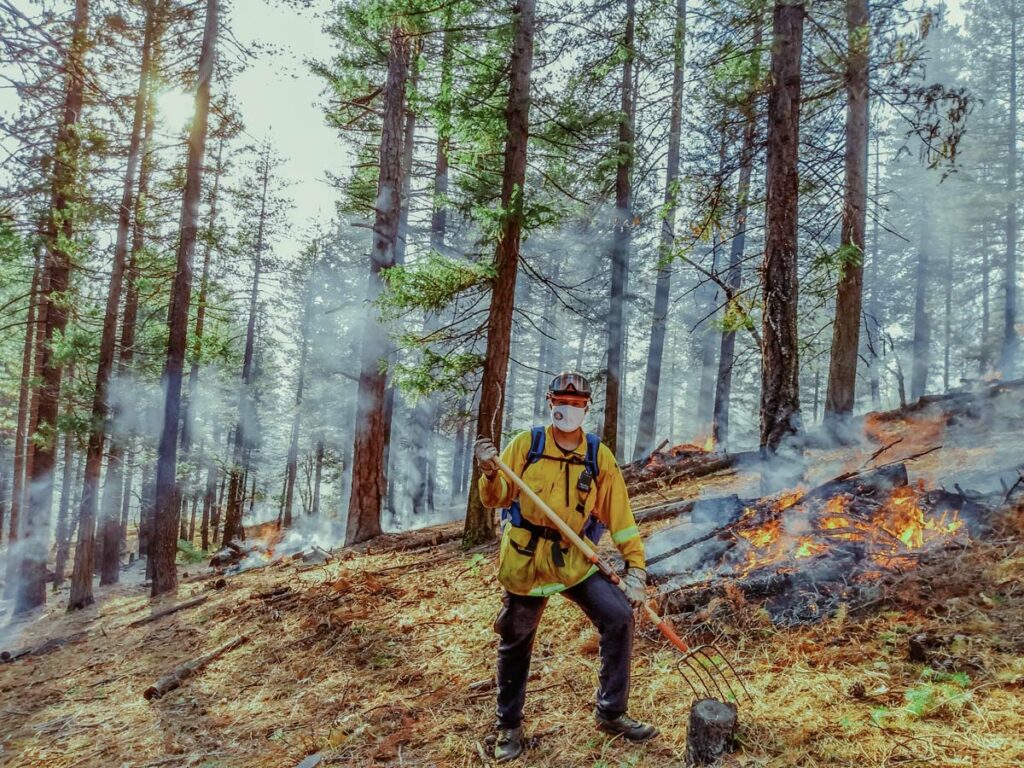
The past year was a difficult one for California and the Sierra Nevada. A pandemic ended—and upended—lives across the globe and while many in California were still struggling to adapt to this new abnormal, the state endured a record-shattering wildfire season.
Despite these twin crises, the Sierra Nevada Conservancy (SNC) continued to work through tragedy and towards resilience. Staff began working remotely in March and continued throughout the year, maintaining essential services without interruption while launching new programs.
2020 Annual Report (pdf document)
Annual Report Contents

2020 (Mega) Wildfire Season
Nearly half of the 2020 Creek Fire, the largest in the modern history of the Sierra Nevada, burned at high severity. The amount, size, and arrangement of high-severity fire in 2020 appears to be unlike anything the region has experienced in the past. Read more about 2020’s (mega) fire season.

SNC Projects Protected Communities from Wildfire
The destruction of the 2020 fire season was neither uniform nor completely random. In places where public and private partners had already completed work to improve forest health, fires appeared to burn in less dangerous and destructive ways. Read about how our projects protected Quincy from the North Complex Fire and how our projects protected Susanville from the Sheep Fire.

SNC Program Milestones
In 2020, we reached three key milestones, including the first year of work by Sierra Nevada Regional Forest and Fire Capacity Program (RFFCP) grantees, launching a new $17-million Biomass Utilization Fund that will provide federally funded, low-interest loans in Tuolumne County, working with Tahoe-Central Sierra Initiative (TCSI) partners to finalize resilience pillars that set forth a shared vision of social, ecological, and economic resilience.
